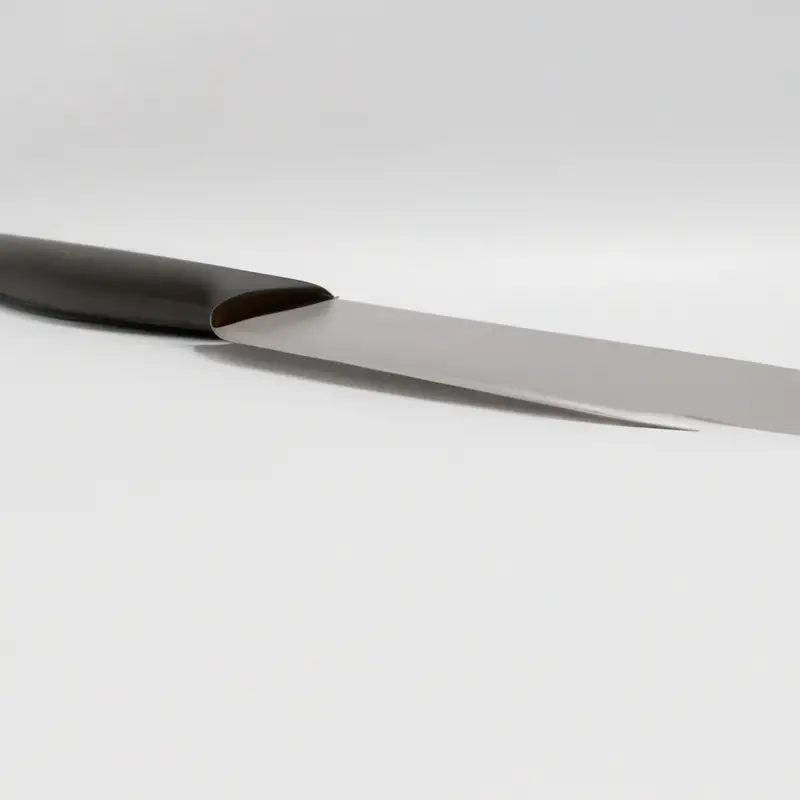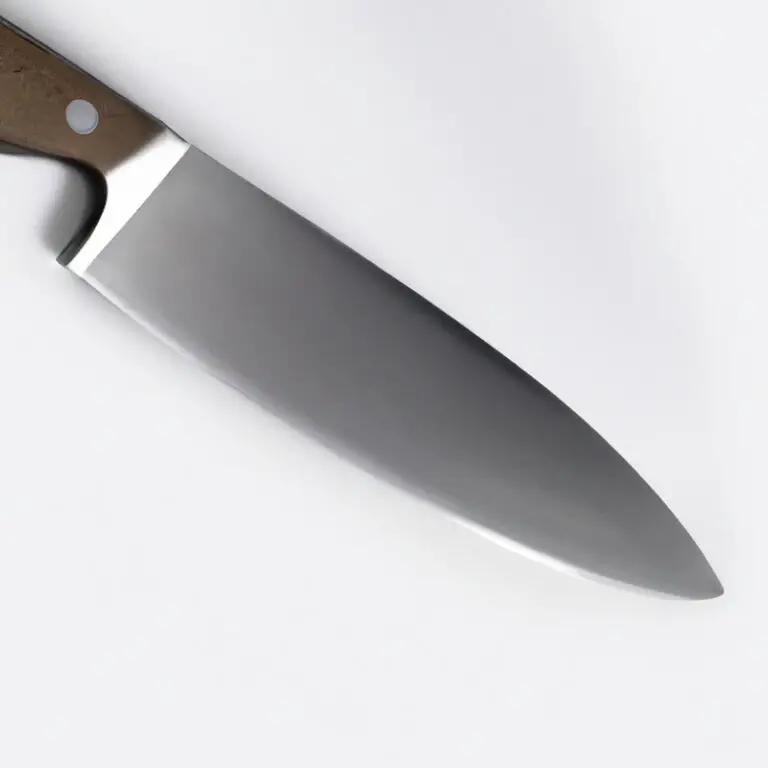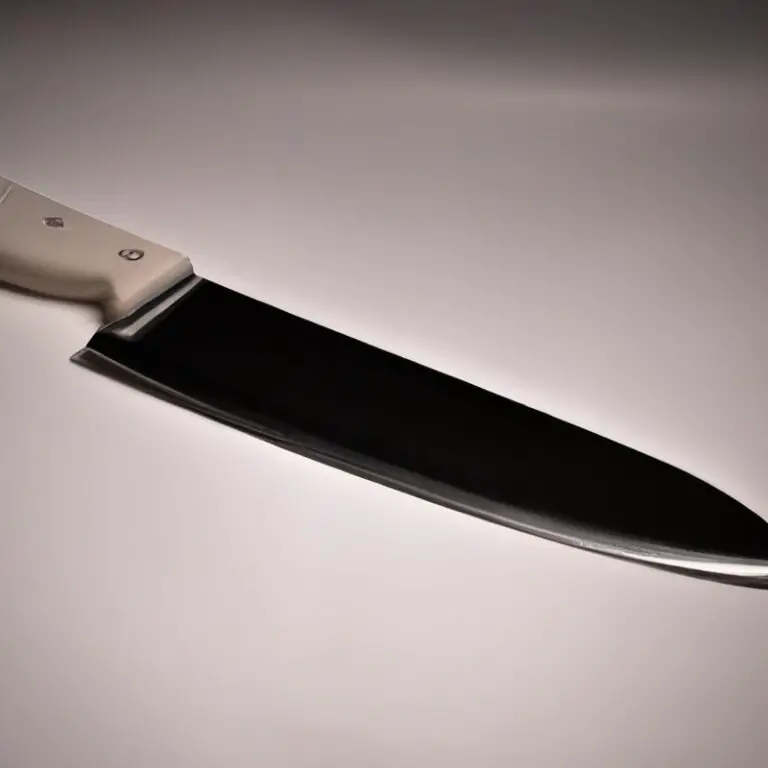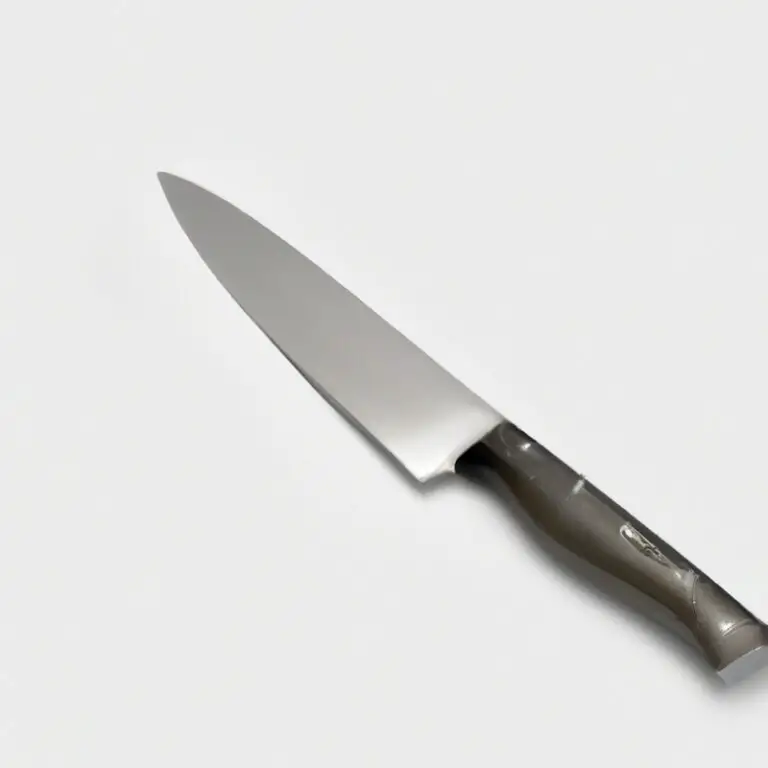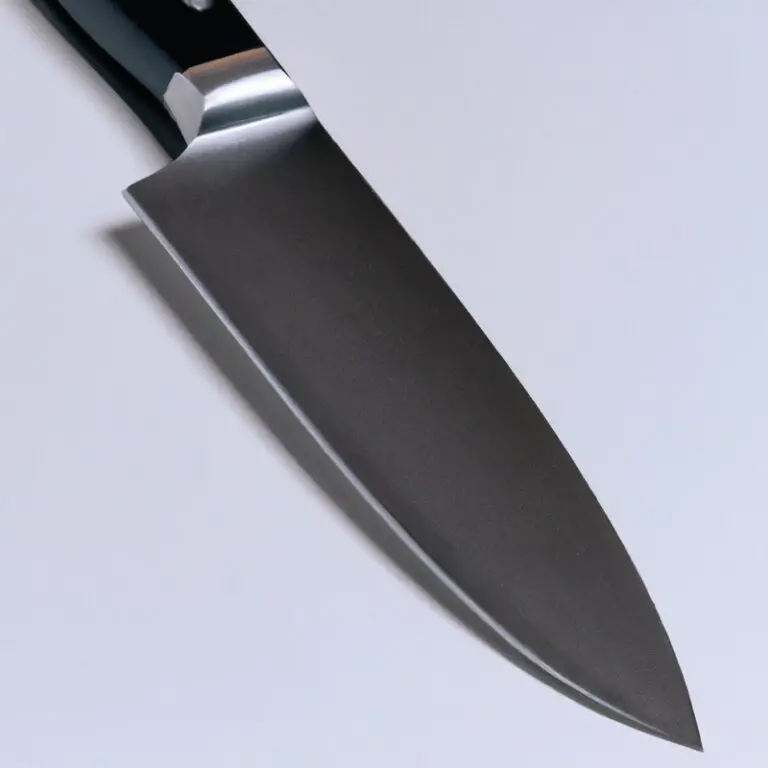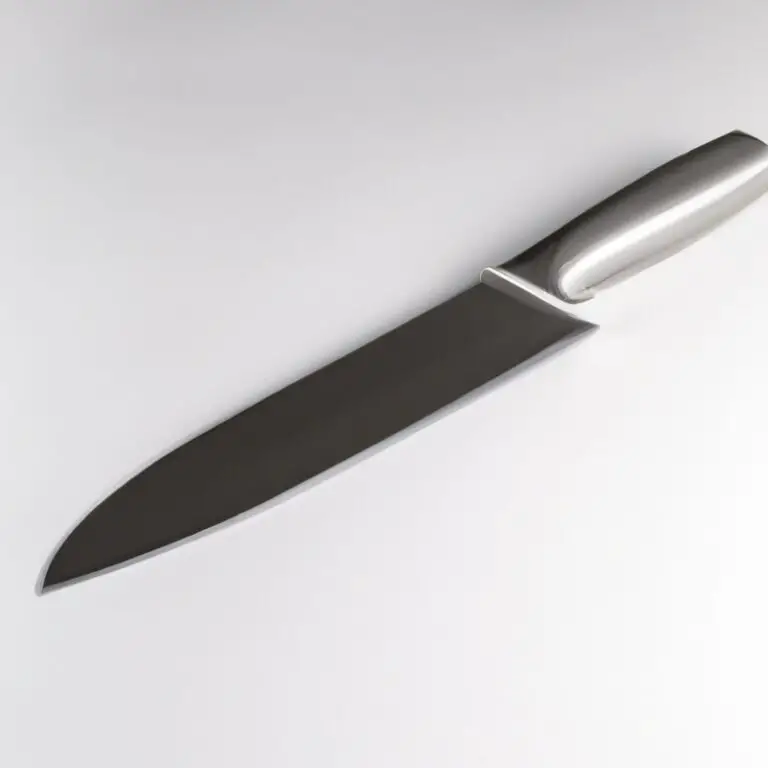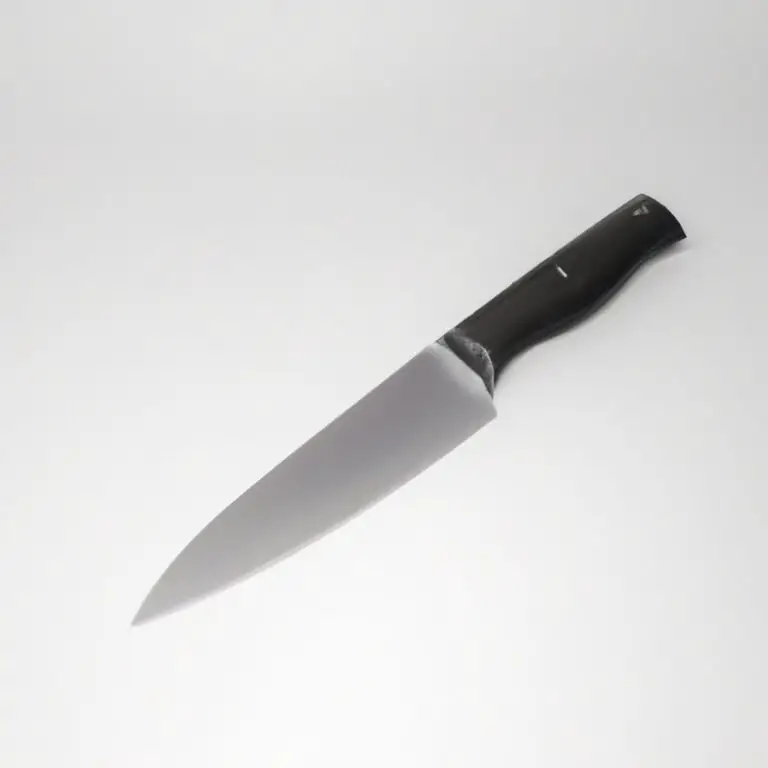How To Clean And Care For a Chef Knife Handle?
Key Takeaways:
- Properly cleaning and caring for your chef knife handle can extend its lifespan and maintain its performance.
- Use mild soap and warm water to clean your chef knife handle after each use, and avoid soaking it in water or using harsh chemicals or abrasive cleaners.
- Regularly oil your chef knife handle to prevent it from drying out and cracking, and store it in a dry, well-ventilated area to prevent mold and mildew growth.
- A well-maintained chef knife handle not only improves your cooking experience, but also ensures your safety in the kitchen.
If you love cooking, you know the importance of having a good chef knife. But did you know that proper maintenance of your chef knife’s handle is just as crucial as sharpening its blade?
Neglecting your knife handle can make it brittle, discolor, and even lead to mold growth.
In this article, I’ll guide you through the dos and don’ts of cleaning and caring for your chef knife handle. You’ll also learn how to protect your handle from stains, scratches, and environmental damages to extend its lifespan.
Let’s get started!
Here is a table that outlines different methods to clean and care for a chef knife handle:| Method | Materials Required | Steps |
|---|---|---|
| Soap and water | Mild dish soap, sponge, water | 1. Wet the sponge 2. Add a small amount of soap and lather it up 3. Wipe the handle gently with the soapy sponge 4. Rinse the sponge 5. Wipe the handle with the wet sponge to remove the soap 6. Dry the handle thoroughly with a clean cloth |
| Vinegar solution | White vinegar, water, sponge/cloth | 1. Mix equal parts of water and vinegar 2. Wet the sponge/cloth 3. Dip the sponge/cloth into the solution 4. Wipe the handle gently 5. Repeat until the handle is clean 6. Rinse the sponge/cloth and wipe the handle again 7. Dry the handle thoroughly with a clean cloth |
| Baking soda and water paste | Baking soda, water, sponge | 1. Mix baking soda and water to form a paste 2. Wet the sponge 3. Dip the sponge into the paste 4. Apply the paste onto the handle and gently rub 5. Rinse the sponge and wipe the handle again 6. Dry the handle thoroughly with a clean cloth |
| Oil treatment | Food-grade oil, clean cloth | 1. Apply a small amount of oil onto the clean cloth 2. Rub the handle with the oiled cloth in circular motions 3. Continue rubbing until the oil has been absorbed 4. Wipe off any excess oil with a clean cloth 5. Let the handle dry completely |
Understanding the Different Materials of Chef Knife Handles
Chef knife handles come in a variety of materials, each with its unique pros and cons. The most common materials are:
- Wood: Wood handles are classic but require more maintenance. They can absorb moisture and bacteria if not properly dried, which can lead to cracking and damage over time.
- Plastic: Plastic handles are lightweight and easy to clean, but they may not be as durable as other materials and can be susceptible to warping or melting with high heat exposure.
- Metal: Metal handles are durable and can withstand high heat, making them an excellent choice for professional kitchens. However, they can be slippery and uncomfortable to hold for extended periods.
- Composite: Composite handles are a fusion of materials such as wood and plastic, resulting in a hybrid handle that provides the benefits of both materials.
When selecting a chef knife, it’s essential to consider the material of the handle and how it will work for your specific needs. A comfortable and secure grip is crucial to safe and effective cutting.
Proper care and maintenance, regardless of the material, can help preserve the knife’s overall lifespan.
Importance of Proper Cleaning for Chef Knife Handles
Proper cleaning of chef knife handles is crucial for maintaining the quality and durability of the knife. Neglecting to clean the handle can lead to a buildup of dirt, germs, and bacteria, which can contaminate food and cause health hazards.
Additionally, a dirty handle can compromise the grip and control of the knife, leading to potential accidents.
Therefore, it is essential to clean the handle thoroughly after each use to ensure its longevity and safety. Using mild soap and warm water, with a soft cloth, is sufficient for cleaning chef knife handles.
Avoid using harsh chemicals or abrasive cleaners that can damage the handle and blade.
Precautions to Take When Cleaning Chef Knife Handles
When cleaning chef knife handles, it is important to take some precautions to prevent damage to the handle or injury to yourself. Here are some key precautions to keep in mind:
- Avoid using abrasive cleaners or scrubbers that can scratch or damage the handle.
- Use a soft cloth or sponge to gently clean the handle and avoid using excessive force.
- Never soak the knife handle in water or submerge it completely. Moisture can cause damage to the handle and the blade.
- Use a mild dish soap and warm water solution for cleaning the handle. Rinse thoroughly and wipe dry.
- If the handle is made of wood, avoid using hot water as it can cause the wood to warp or split.
- For stainless steel handles, avoid using bleach or ammonia-based products as they can cause discoloration.
By following these precautions, you can effectively clean your chef knife handle without causing any damage or injury.
Materials and Tools Needed for Cleaning Chef Knife Handles
To effectively clean and care for a chef knife handle, you will need a few materials and tools. These include:
- Mild dish soap or a specialized knife cleaner
- Warm water
- Microfiber or soft cloth
- Sponge or scrub brush
- Baking soda or vinegar (optional
- Rubbing alcohol (optional
It is important to avoid harsh chemicals or abrasive materials that can damage the handle’s finish. Instead, use gentle, non-abrasive cleaners and tools.
When cleaning, start by mixing mild dish soap or a specialized knife cleaner with warm water.
Dip the microfiber or soft cloth in the mixture and gently wipe down the handle. For any stubborn stains or grime, use a sponge or scrub brush with a gentle touch.
If needed, baking soda or vinegar can be used as a natural cleaner for tough stains.
Simply mix with water to create a paste, apply to the handle, and let sit for a few minutes before rinsing off. Rubbing alcohol can also be used to remove any bacteria or odors from the handle.
Simply dampen a cloth with rubbing alcohol and wipe down the handle.
Overall, the materials and tools needed for cleaning a chef knife handle are simple and readily available. With the right approach and gentle touch, you can effectively clean and care for your knife handle to extend its lifespan and ensure optimal performance.
Step-by-Step Guide to Cleaning Chef Knife Handles
To clean chef knife handles, simply follow these steps:
- Remove any residue or debris from the handle using a soft cloth or brush.
- Mix a cleaning solution of warm water and mild dish soap.
- Dip the cloth or brush into the solution, and carefully scrub the handle.
- Rinse the handle with warm water, and dry it thoroughly with a clean cloth.
- If the handle is made of wood, avoid soaking it in water to prevent warping or cracking.
- For optimal results, apply a small amount of oil or polish specifically designed for knife handles and buff with a clean cloth.
- Store the clean knife in a dry and safe place.
Follow these easy steps regularly to maintain its appearance, reduce bacteria buildup, and extend the life of your chef knife handle.
Tips for Protecting Chef Knife Handles After Cleaning
After cleaning your chef knife handle, it is essential to protect it. Here are some tips to help you maintain your knife handle’s quality:
- Dry the handle immediately after cleaning to avoid moisture build-up that can lead to rust or corrosion.
- Avoid soaking the handle in water or using abrasive cleaning agents.
- Apply a thin layer of mineral oil or food-grade wax to the handle. This protects the wood from drying out and cracking.
- Store your knife in a dry, cool place, away from direct sunlight or heat sources.
- Be gentle when using your chef knife to avoid damaging the handle.
By following these simple tips, you can extend the life of your chef knife handle and keep it looking as good as new.
Common Mistakes to Avoid When Cleaning Chef Knife Handles
Here are some common mistakes to avoid when cleaning chef knife handles:
- Using abrasive cleaning tools: Avoid using abrasive cleaning pads or harsh chemicals when cleaning knife handles as they can scratch or damage the surface.
- Soaking in water: Do not soak knife handles in water for extended periods as it can cause the wood or other materials to warp or crack.
- Using the dishwasher: Never put knife handles in the dishwasher as the high temperatures and strong detergents can damage the material, loosen rivets, or cause discoloration.
- Neglecting to dry: Always dry the knife handle thoroughly after cleaning to prevent moisture from settling in and causing damage over time.
- Applying too much pressure: Avoid applying too much pressure when scrubbing knife handles as it can wear down the finish or cause scratches.
By avoiding these common mistakes, you can extend the lifespan of your chef knife handles and keep them looking their best for years to come.
Maintaining Chef Knife Handles to Extend their Lifespan
Maintaining chef knife handles is crucial if you want to extend their lifespan. Here are some tips to help you keep your knife handles in top shape:
- Keep them dry: To prevent warping, cracking, or bacterial growth, make sure to dry the handles completely after each use.
- Avoid soaking: Avoid soaking the handles in water or using abrasive cleaners as it can damage the material and finish of the handle.
- Use food-grade oil: Applying a food-grade oil like mineral oil or walnut oil to the handles will prevent them from getting dry, cracking, and absorb moisture while also restoring shine and luster.
- Protect against scratches and cuts: Avoid chopping on hard surfaces or bones, as it can cause scratches or damage to the handles.
- Store properly: Keep your knives in a block, sheath, or magnetic holder to avoid any damages to the blade or handles.
By following these simple tips, you can maintain your chef knife handles in an optimal condition, ensuring they will last for years to come.
How to Remove Stubborn Stains from Chef Knife Handles
Stubborn stains on chef knife handles can be challenging to remove, but with the right tools and techniques, it is possible. Here are the steps to follow:
- Start by creating a mixture of baking soda and water to form a paste.
- Apply the paste to the stained area and scrub gently with a soft-bristled brush or sponge.
- For tougher stains, use white vinegar instead of water to create the paste. The acidic properties of the vinegar help to break down the stain.
- Rinse off the paste and dry the handle completely with a clean cloth.
- If the stains are still stubborn, try using a small amount of rubbing alcohol or nail polish remover applied to a cloth.
- For wooden handles, you can also try using a mixture of lemon juice and salt. Rub the mixture onto the stain and let it sit for a few minutes before wiping it clean.
Remember to always use gentle, non-abrasive cleaning methods, and avoid using harsh chemicals that could damage the handle. Regular cleaning and maintenance will keep your chef knife handle looking its best and prolong its lifespan.
When to Consult a Professional for Cleaning Chef Knife Handles
If your chef knife handle has been damaged or has stubborn stains that cannot be removed with regular cleaning methods, it may be time to consult a professional. Professional knife cleaners have access to specialized equipment and cleaning products that are not available to the general public.
They are also trained to handle knives safely and effectively, ensuring that your knife handle is cleaned without causing any damage.
Additionally, if your knife handle is made of a rare or valuable material, such as ivory or bone, it is important to seek the advice of a professional cleaner to ensure that it is not damaged during the cleaning process. Overall, if you are unsure about how to properly clean your chef knife handle or if you encounter any issues while cleaning it on your own, it is always best to consult a professional.
This will help ensure that your knife handle remains in top condition for years to come.
Using Oils and Polishes for Conditioning Chef Knife Handles
Using oils and polishes is an effective way to condition and protect the handles of your chef knives. Oils like mineral oil or coconut oil can penetrate the wood and help preserve its natural moisture, preventing the handle from cracking or splitting.
Polishes, on the other hand, add a protective layer to the handle’s surface, creating a barrier against water, dirt, and other contaminants.
When applying oil, make sure to use a small amount, spreading it evenly with a clean cloth. Allow the oil to soak in for a few minutes before wiping off any excess.
For polishes, follow the manufacturer’s instructions and make sure to use a non-abrasive product.
Keep in mind that some materials, like synthetic handles, may not require oil or polish. Always consult the manufacturer’s recommendations before applying any product.
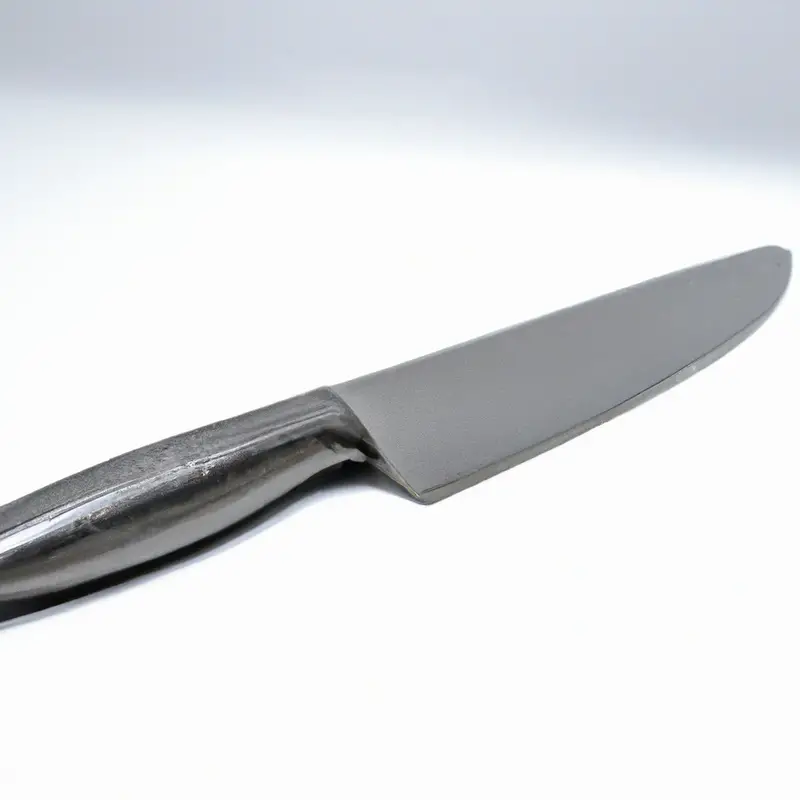
Environmental Considerations for Cleaning Chef Knife Handles
When cleaning chef knife handles, it is important to consider the environmental impact of the cleaning products and methods used. Avoid harsh chemicals that can harm the environment and opt for eco-friendly options instead.
Natural cleaning solutions, such as a mixture of water and vinegar or baking soda, can effectively clean knife handles without polluting the environment.
Additionally, using reusable cloths or sponges instead of disposable ones can also reduce waste. By taking these environmental considerations into account, you can clean your chef knife handles while also being mindful of the planet.
Best Practices for Storing Chef Knives and their Handles
To ensure the longevity and sharpness of your chef knives, proper storage is essential. Here are some best practices for storing your chef knives and their handles:
- Use a knife block or magnetic strip: A knife block or magnetic strip allows for safe and convenient storage of your chef knives. Make sure the knives are inserted or placed in the block or strip with their blades facing downward, to prevent the blades from dulling or damaging the handles.
- Avoid storing knives in drawers: Keeping knives in a drawer can cause blades to rub against other utensils, leading to chips, nicks, or dulling. It’s also a safety concern, as reaching into a drawer without looking could potentially lead to injury.
- Consider a protective cover: If you need to transport or store your knives in a drawer, consider using protective covers for the blades. This will help to protect both the blade and the handle.
- Keep knives dry: Moisture can lead to rust and corrosion on the blade and handle. After washing and drying, make sure the knife is completely dry before storing it.
- Don’t overcrowd: Avoid cramming too many knives into a storage block or using a strip that is too small for your collection. Overcrowding can lead to damage to both the knives and the storage apparatus.
By following these best practices for storing chef knives and their handles, you can help ensure they remain in top condition and last for years to come.
How Often Should You Clean and Care for Your Chef Knife Handle?
To ensure that your chef knife handle remains in top condition, it is important to clean and care for it regularly. It is recommended to clean your chef knife handle after each use to prevent any buildup of dirt, oils, or bacteria that can cause damage over time.
A gentle wipe down with a damp cloth and mild soap should suffice.
It is also important to inspect your knife handle regularly for any signs of wear and tear, such as cracks or chips. Addressing these issues promptly can prevent further damage and prolong the lifespan of your knife.
In terms of deep cleaning, it is recommended to give your knife handle a thorough cleaning once every few weeks or as needed.
This may involve using a specialized cleaner or polish specifically designed for knife handles, depending on the material of your handle. Regular maintenance and care of your chef knife handle can increase its longevity and ensure optimal performance in the kitchen.
The Importance of Regular Maintenance for Chef Knives and their Handles
Regular maintenance is crucial for maintaining the quality and longevity of your chef knife and its handle. The handle can accumulate dirt, grease, and bacteria over time, which can lead to deterioration and pose a risk to your health.
Regular cleaning and maintenance of your chef knife handle can prevent damage caused by moisture and oxidation, which can weaken the handle’s material.
Furthermore, regular maintenance can help preserve the blade’s sharpness and enhance the knife’s overall performance. Neglecting a chef knife’s handle and blade can lead to costly replacements or repairs, making regular maintenance a necessary step in maintaining the tool’s value.
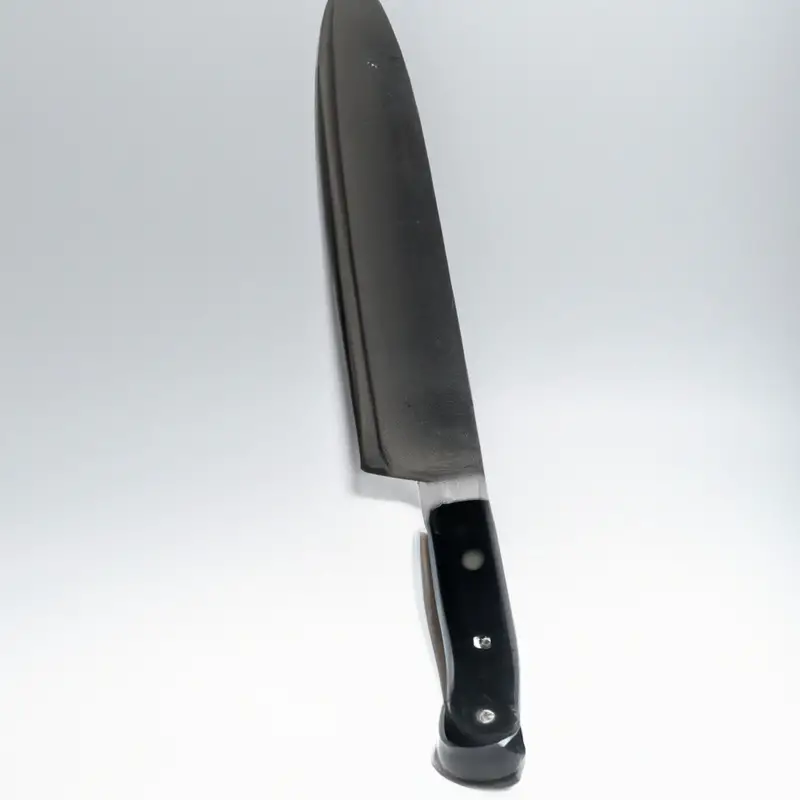
Final Verdict
Proper cleaning and maintenance are essential for maintaining the integrity and longevity of your chef knife handle. By following the steps outlined in this article, you can ensure your knife’s handle remains in pristine condition for years to come.
Remember to always use the appropriate materials and tools for cleaning, take necessary precautions, and avoid common mistakes.
By taking care of your chef knife handle, you are not only protecting your investment but also ensuring your safety in the kitchen. So, take the time to properly care for your chef knife handle and reap the benefits of a sharp and reliable tool.
Trust the information presented in this article and apply the practical takeaways to elevate your culinary experience.

